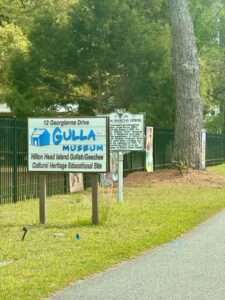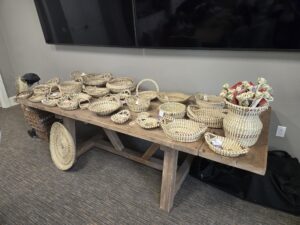Gullah Heritage on Hilton Head Island
As I write this post, many on the Island are focused on the RBC Heritage golf tournament. But, I want to write about a different Heritage here on Hilton Head island, that of the Gullah community.
The Gullah community is one of the most culturally distinctive African American populations in the US. After being brought from Africa as slaves, they established a culture rich with West African components, including a distinctive language, history, economic system, and artistic tradition. The Gullah people reside in the coastal Lowcountry region of the southeastern US, including Hilton Head Island and nearby Daufuskie Island.
History of the Gullah Community
In the 18th century, Charleston, SC, became one of the primary ports of entry for enslaved Africans, many of whom were put to work on cotton, rice, sugar, and tobacco plantations in the South. West Africa was known for the cultivation of African Rice, which American settlers discovered would grow particularly well in the South. While many people think of cotton and tobacco when they think of Southern plantations, rice farming was one of the most successful industries in the late 18th Century. The enslaved Africans brought the skills to successfully grow African Rice in America and also had natural immunity to malaria and yellow fever transmitted by mosquitoes.
Because the white Plantation owners did not want to be exposed to these diseases, they tended to be absentee farmers – they lived in the coastal cities or moved away from the Plantations during the rainy
Spring and Summer months. The owners left their overseers in charge of the rice plantations with hundreds of slaves who continued their African traditions, slowing adapting them as new slaves arrived. Over time, the Gullah (also known as GeeChee, mostly in coastal Georgia) people developed a creole culture in which elements of African languages, cultures, and community life were preserved. Their culture developed different from that of the enslaved Africans in states such as North Carolina, Virginia, and Maryland, where the slaves lived in smaller groups, and had more sustained and frequent interactions with whites and British American culture.
In more modern times, the Gullah community has faced challenges that have threatened their way of life. In particular, resorts and residential and commercial developments have sprung up where the Plantations once dominated, taking over land where they lived. But, through the actions of many, their way of life continues.
The Hilton Head Island Gullah Community
The Gullah Community on Hilton Head Island is alive and thriving today due in part to the Hilton Head Gullah Geechee Land and Cultural Preservation Task Force (Gullah Geechee Land & Cultural Preservation Project ). Their goal is to identify and assist in the preservation of the Gullah-Geechee culture.
The Gullah neighborhoods on Hilton Head Island were established in the 1860s and are clustered on the north of the Island. The 13 neighborhoods (Historic Gullah Neighborhoods) each had their own characteristics and individuals with unique skills but they were linked in many ways, such as through places of worship, community stores, and one-room school houses. One of them, Mitchelville, was the first settlement for freed slaves in the US, established in 1862. Big Hill, one of the smaller neighborhoods, was a community of farmers who produced watermelon, sugar cane and other crops, which they shipped to Savannah to be sold at market. Still another, Big Stoney, is considered the gateway to Hilton Head Island and into the mid-1900s, served as the Island’s downtown area due to the number of businesses, including the Island’s post office.
Today, other organizations also work to preserve Gullah history and traditions. I highly recommend checking out the following:
The Gullah Museum of Hilton Head Island (Gullah Museum of HHI | gullah | 12 Georgianna Drive, Hilton Head Island, SC, USA).
Hilton Head Island Gullah Celebration – at the forefront of economic development and preservation with their annual February event featuring Gullah entertainment and arts.
Hilton Head Vacation : Explore with Memorable Hilton Head Tours – provides Gullah Heritage Tours
Discovering Legacy Of African Cultures – The Gullah Geechee Cultural Corridor works to preserve, promote, and protect the Gullah GeeChee cultural heritage.
Our own Palmetto Dunes POA has sponsored activities to connect us to our Gullah community, including a recent Gullah Sweetgrass Basket Making Class Participants learned from a local Gullah basket maker about the history of the Gullah culture and Sweetgrass basket-making, one of the Lowcountry’s best-known art forms. Everyone also got a hands-on demonstration on making a small basket or coaster using locally found natural materials. If they offer this class in the future, I highly recommend signing up for it.
Alternatively, the Coastal Discovery Museum – Home | Coastal Discovery Museum – offers Sweetgrass basket classes as well as Gullah Heritage Trail tours by bus. Look them up and go learn more about this rich and unique culture.




